This is the story of Hollywood royalty. Sparks flew and embers are still visible in their movie pairings – eight in total – all at Metro Goldwyn Mayer. Of all the stars in the heavens they were two of the brightest…
Gable and Crawford
By 1931 Joan Crawford‘s star was already shining brightly. Not only was she Metro Goldwyn Mayer‘s (MGM) second highest grossing actress after Marie Dressler, but she was married to Douglas Fairbanks Jr. — son of Douglas Fairbanks and step-son of Mary Pickford, the ruling couple of silent-era Hollywood. So on both fronts, professionally and personally, Crawford had connections.
Joan Crawford signed a contract with MGM in 1925 and got her big break with Harry Beaumont’s, Our Dancing Daughters in 1928. And she never looked back. Joan’s top Hollywood status was officially cemented by the media at this period in her career: The Motion Picture Herald had published their “Top Ten Box Office” list in 1932; Joan appeared regularly from 1932 through 1936 (fellow early MGM queens Garbo and Shearer permanently fell off the list after ’32 and ’34, respectively).
Famously hard-working and dedicated to her career, Joan was also not shy about the fact she enjoyed men, saying once, “I need sex for a clear complexion, but I’d rather do it for love.” She was named as ‘the other woman’ in at least two divorces. Crawford was the epitome of glamour, but was also comfortable in the “man’s” world that was Hollywood, enjoying affairs with producers, directors and fellow actors as opportunities presented themselves. All of these were known. Some by the public and all by the heads of MGM who were notoriously protective of the private lives of their stars. Head of MGM, Louis B. Mayer rarely worried about Crawford’s liaisons, given no scandal resulted. He knew she was the one star who would never let anything interfere with her popularity. But there were exceptions.
By 1931, Clark Gable had appeared in a handful of movies, but had achieved real success only on stage. A near-break in Hollywood occurred when director Mervyn LeRoy intended to cast him in his upcoming gangster film, Little Caesar for Warner Brothers (WB) but Jack Warner didn’t like Gable because his ears were too big. The part of Joe Masara in LeRoy’s film went to Douglas Fairbanks, Jr. instead. Fairbanks was married to Joan Crawford.
Feeling dejected, Gable was ready to go back to New York and the theater, which he viewed as a more prestigious career than the movies anyway, but MGM’s Irving Thalberg made him an offer he couldn’t refuse, a one-year, $650-a-week contract. Searching for a young stud who would appeal to both male and female audiences, MGM found what they were looking for in Clark Gable and they tested it by pairing him with every popular female star of the time – Norma Shearer and Greta Garbo included. To make sure I don’t single out Joan Crawford’s proclivity for liaisons, it must be noted Clark Gable was her male counterpart and then some. He was a notorious womanizer known to bed every woman he could, including nearly all of his co-stars. He was married five times and cheated on everyone.
In any case, all the parts he was playing paid off for both Gable and MGM as the young actor was a huge hit with audiences who started writing in to the studio requesting to see him in more pictures. One special request (reportedly) came from mega-star Joan Crawford who’d requested him for her 1931 picture, Dance, Fools, Dance.
Of the first time she met Gable, Crawford recalled, “it was like an electric current went through my body…my knees buckled…if he hadn’t held me by the shoulders, I’d have dropped.”
DANCE, FOOLS, DANCE (1931)
Rich Stanley Jordan dies after losing his fortune in the stock market crash leaving his spoiled children to fend for themselves. Ill-prepared for the real world, neither of Jordan’s children, Bonnie (Crawford) or Bob (Lester Vail) make smart decisions. Although Bonnie does a hell of a lot better. Bonnie gets a job as a journalist while Bob gets involved with unsavory types in the bootlegging business. Long story short, Bob is forced to commit a murder by the head of the racket, Jake Luva (Gable) and Bonnie ends up going undercover to investigate the murder, not knowing that when she uncovers the murderer it’ll be her own brother.
Directed by Harry Beaumont, Dance, Fools, Dance is not a great picture by any means but it has interesting moments – especially when Crawford and Gable are on-screen together. It doesn’t happen often, or for long in this picture, but you can feel the heat in their few encounters. Then again, no disrespect to Gable, but Crawford had heat with most everybody it seems in the early 1930s. She seems to flirt with the typewriter in this movie and not by anything she says. It’s those eyes! Fantastically expressive and coquettish, making promises you just know she’ll keep.
As for Clark Gable in this? He has great presence in a supporting role as a gangster. He sticks out like a sore thumb in a good way – not sore and much bigger than a thumb. He matches Crawford in the energy department quite nicely. I’m gonna go out on a limb and say he had definitive star potential.
Dance, Fools, Dance has a lot of pre-code-y-ness to enjoy – a little moonlight bathing to start off the movie and plenty of the sassiness in Bonnie that we are used to seeing from depictions of pre-code women in film. The fact that she’s not against “trying love out” before marriage is one thing. Bonnie likes her freedom as much as any man. How refreshing.
And regarding Joan Crawford the mega-star – upon completing Dance, Fools, Dance she told MGM she wanted to work with Clark Gable again – IMMEDIATELY!
LAUGHING SINNERS (1931)
Ivy Stevens (Crawford) is an entertainer at a nightclub who’s in love with a low-life who leaves her to marry a rich dame. Broken hearted and desolate, Ivy runs into a Salvation Army Officer named Carl (Gable), with whom she finds redemption.
Although Harry Beaumont’s, Laughing Sinners has little laughing and relatively little sinning, I liked it a lot more than I thought. Crawford is great as Ivy, both the “life of the party” girl and the sweet one who falls for Carl. It’s a hoot to see her dance and sing a torch song in this, I must say. She also looks great, softer than I’m used to as she dons lighter locks and her performance here has great sensitivity to it as well. As noted in the New York Times, “Miss Crawford…has tempered the intense and not a little self-conscious quality of her acting without hurting her vibrant and breath-catching spirit.”
I also enjoyed Clark Gable quite a bit in Laughing Sinners. Gable plays the sort of chap I’m not used to seeing him play, an innocent do-gooder. Although Gable rarely played bad guys, that I’ve seen anyway, he’s never free of sin. In this particular film, Gable’s Carl helps Ivy find what’s really important in life, her self-respect. It’s refreshing to see in this movie that a woman can make ill-advised decisions of the moral kind and still walk off with the prize, sort to speak – even in a pre-code.
Crawford and Gable are well matched in Laughing Sinners, but I’ll probably say that about all the films noted in this post. They just are as a two-some. There’s no discernible heat between them in this movie, given the fact that when they’re together they’re doing the good work of the Salvation Army, but there is genuine affection and absolute chemistry.
POSSESSED (1931)
Things are heating up!
In the third production Joan and Clark starred in in 1931, Crawford plays Marian Martin, a small-town factory worker who longs to make something of herself and achieves her goal by becoming a kept woman by rich lawyer, Mark Whitney (Gable). The lawyer is intrigued by Marian immediately upon meeting her because of her candor. She is up front about what she wants out of life, which is to find a man who’ll support her.
“I like women who know what they want. Sometimes I can help them get it.”
Not surprisingly, Marion falls hard for Whitney and he for her, except he wants her only as a mistress, not a wife. You know how that story goes, she’s good enough to fall in love with, but not to marry. And Marian understands – she stands by her choices in life and must live with them.
Pride and “real” love threaten to get in the way of the heat these two have between them, which is now palpable.
Audiences would have easily bought into a rags to riches story depicted in Clarence Brown’s, Possessed in 1931, in the midst of the depression. But they also bought into the pairing of Crawford and Gable as a couple. BIG TIME! Well, I did too in this one. The pairing solidifies.
Gable gives a fine performance as the handsome, rich attorney with political aspirations but Crawford is outstanding in this picture. It turns out to be a favorite among her performances. It outshines the film, actually and the film is good. She shows a wonderful range. Not to mention she looks fantastic in it, which is helped by the fact they shoot her beautifully. Kudos must be given to cinematographer Oliver T. March who takes full advantage of Crawford’s eyes in several scenes making them the center of attention. Simply gorgeous lighting, which I all too often forget played such a vital role in making movie stars, movie stars.
Possessed was advertised as a film, “for those who like their film fare hot and the morals of their screen heroines loose.”
This film has a pre-code maturity to it that makes it a more layered film that I expected it to be, treating its pre-code subject matter, a racy one, with some gravitas. Admirably so, actually. My only complaint is the sell-out, all-too-sappy, typical Hollywood ending, which is a disappointment of sorts. And so, while still a memorable picture, what would have made it a standout is diffused in the end.
For anyone who doesn’t know, Possessed is the first of two films with this title that Joan Crawford starred in. The second was the 1947 film directed by Curtis Bernhardt for which the star received an Academy Award nomination for Best Actress. These two films make Crawford the only star to appear in two completely different films with identical titles.
As for Gable – well, before 1931 was over MGM broke its initial $650-a-week contract to offer him $1,000 a week. To put his rising star in perspective, of the forty-three films the studio produced that year, Gable was in nine of them.
♦♦♦♦
There is no dispute as to whether Crawford and Gable became lovers. They did. And it was an on-again, off-again love affair that lasted decades and several marriages and divorces (though never to each other). However, I read conflicting stories as to when the affair started – some say immediately upon their starting to work on Dance, Fools, Dance, their first movie together and others who say it was during the filming of Possessed, later that year. In any case, it was torrid by all accounts. Much as the two stars may have tried to keep things under wraps, rumors of the affair were rampant by the time Possessed was being released. This was something that Louis B. Mayer would not abide by and he was forced to step in to ensure neither of his stars were ruined – so as not to affect profits of course as destroying the illusion or fantasy of how they appeared on-screen was the biggest sin actors could commit.
So, the story goes that Crawford’s husband, Douglas Fairbanks, Jr., and Gable’s wife, Ria Langham, both approached Louis B. Mayer for help in this matter. As a result, Mayer told his two stars to stop the affair at once or their careers in Hollywood would be finished. To facilitate matters, Crawford and Gable were sent off to work with other people. And, to help promote Possessed, Gable’s wife, Ria, was sent on a tour across the country by the MGM PR machine.
DANCING LADY (1933)
At the time this entry was published I’d yet to see Robert Z. Leonard’s, Dancing Lady, but I included it in the postto stay true to the timeline of film collaborations between our two stars. Since then I’ve seen it and published a commentary that you can access here.
Trivia:
Dancing Lady is Fred Astaire‘s and Nelson Eddy’s movie debut. Each play themselves in the film. Though he was reported to have appeared years earlier in the silent film Fanchon, the Cricket, he and his sister Adele only visited the set; they did not appear on camera in that one. (IMDB)
The fabulous, Eve Arden appears uncredited in a small scene in the theatre lobby yelling at her agent about auditioning for “the southern part.”
Joan Crawford was Fred Astaire‘s first on-screen dance partner with their appearance in Dancing Lady. Here is the film’s trailer.
Finally, Dancing Lady features Franchot Tone‘s first romantic role opposite Joan Crawford – her future husband with whom she made seven films.
FORSAKING ALL OTHERS (1934)
“THIS PICTURE APPROVED BY THE PRODUCTION CODE ADMINISTRATION OF THE MOTION PICTURE PRODUCERS & DISTRIBUTORS OF AMERICA.” Certified number 487
I made sure to include the Production Code warning because despite the fact that W. S. Van Dyke’s, Forsaking All Others centers around a love triangle, there’s no pre-code hanky-panky going on. In case you’re against that sort of thing. In the Gable-Crawford film journey this is where The Motion Picture Production Code reared its ugly head.
Forsaking All Others is light-hearted fare and highly enjoyable. It is a romantic comedy about three childhood friends, Dill, Mary and Jeff (Robert Montgomery, Joan Crawford and Clark Gable respectively) who grow up to fall in love – with each other..
The story begins on the night before Dill (Montgomery) and Mary (Crawford) are to be married. The pre-wedding celebrations have begun when Jeff (Gable), who’s been in Europe for three years, returns to ask Mary to marry him. Upon learning of Dill and Mary’s pending nuptials, Jeff says nothing and agrees tp play the part of best friend by giving Mary away.
The wedding day now upon them, as Mary gets ready to walk down the aisle, Jeff receives a telegram from Dill asking him to please let Mary know he’s run off and married another woman, a spider named Connie Barnes (Frances Drake). They used to call that sort of woman a spider, didn’t they? Anyway – naturally, Mary is heartbroken but she’s determined to forget Dill and goes about her life as best she can. Then one day, in a “spider-ish” act, Connie invites Mary to a party she and Dill are throwing for their society friends. The intent is to dangle her happy marriage in front of Mary, but her plan backfires. Mary goes to the party determined to prove to everyone she’s over Dill, but instead reconnects with her former intended and the two profess their love for each other once again. Meanwhile, Jeff’s been waiting patiently without making a move on Mary to give her time to get over Dill. Now all that time seems to have been for naught.
Long story short, Connie learns that her husband is seeing his former fiance regularly and threatens to go to the papers with the scandal. To avoid an embarrassing situation, Jeff comes to Mary’s rescue – but Jeff’s had it with sitting in the sidelines and decides to return to Europe. As he and Mary are saying goodbye they kiss and Mary, suddenly, realizes she’s loved Jeff all along.
Due to the fact that we don’t see the romance between Crawford and Gable come to fruition in the film there’s little opportunity to feel the heat between them. But it is there. They sparkle when they share the screen. In fact, her love affair with Robert Montgomery fizzles in comparison. The only word I can think of to describe the difference is to say Montgomery is benign compared to the other two who exude sex appeal and chemistry.
CHAINED (1934)
Despite it’s somewhat suggestive title, because I’m still in pre-code mode, Clarence Brown’s, Chained is a melodrama about star-crossed lovers.
Diane Lovering (Crawford) is in a long-standing love affair with her boss, Richard Field (Otto Kruger). Field is married but is in love with Diane, a much younger woman. When the story begins, Field asks his wife for a divorce but the wife refuses to grant him one, although she seems fine with the fact that her husband is in love with another woman. She cares only about what others might say.
To spare Diane any embarrassment, Field sends her on a cruise to Buenos Aires to shop until things quiet down on the home front. While on the cruise, Diane meets Mike Bradley (Gable) and the two fall in love. Diane resists the temptation, however, because she feels indebted to Richard Field who’s always been good to her, but the two young people have a lot more in common. Like fun, for instance. And passion.
While in Buenos Aires Diane and Mike succumb to their feelings and she makes up her mind to return to New York and let Field know that she’s in love with another man. But – by the time she returns Field’s wife is in Reno granting him the divorce so Field greets Diane with a surprise, a proposal of marriage, which she accepts because he’s given up everything for her.
Diane sends Mike a letter explaining she’s married another man. Then time passes. At every high society event – opera, dance show, play, Diane’s face is pained as she constantly thinks about her true love lost.
Then one day, as Diane prepares to go on a trip with her husband, she runs into Mike in a New York sports shop. He’s in town for business. Although Mike tries to avoid her as best he can, Diane insists they must speak so she could explain the situation with her marriage. They go for a walk and for lunch in his hotel suite. Once together and alone, the two can’t help but profess their love for each other again. But she’s still married and with nothing to be done about it, she leaves prepared to never see Mike again.
In that wonderful scene between the two stars it’s clear the heat between them hasn’t diminished. Diane leaves Mike that day with what she thinks is their last kiss to keep her going so she can venture forth with a man she doesn’t love. The next day, as planned she and Field go on their trip. Once there, they’re surprised by an uninvited visitor, Mike, who’s determined to speak to Field about the difficult situation they all find themselves in. Reluctantly, Mike accepts Field’s invitation to breakfast, waiting for the right moment to tell his host that he’s in love with his wife. But the moment never materializes as Mike sees the affection with which Field and Diane interact. He decides Diane was right, Field doesn’t deserve what he was about to serve and leaves. Alone.
Now thinking Mike is truly gone forever, Diane struggles to keep it together but Field notices. He tells her he’s known something was off since she’d returned from the cruise a year earlier. He’s a decent man who tells her, in a tender scene, that he’d stolen her happiness and had no right to it. It isn’t too late to make amends. And I’ll leave it at that. Chained is a lovely movie.
Crawford has been Crawford in every film in this post so far – a super star and an affecting actress. But Gable came to his own in Chained – he looks more comfortable in his own skin in this picture and the skin suits him nicely. I know it’s been said a million times but if I may forget propriety for a moment and say, YAUZA, was this guy manly or what?! And Joan Crawford agreed and would claim that the attraction between her and Clark was not only instant, but also mutual. “I adored him. Just adored him. I don’t believe any woman is telling the truth is she ever worked with Gable and did not feel twinges of a sexual urge beyond belief. I would call her a liar.”
Watching Gable’s evolution through these films – from innocent, energetic and loud, young stud to mega-watt macho man is quite something. Why old man Richard Field would encourage gorgeous Diane Lovering in Chained to go on a long cruise alone is beyond me. For one, her name is “Lovering” for crissakes and two, there’s no way Field could not smell Gable’s pheromones from the shore. It’s an impossibility. As I watched scenes in the film during which Gable skeet shoots I kept thinking he doesn’t really need the gun. I just bet his “pull” alone would have exploded those skeets. I just bet. Anyway, Gable and Crawford look pretty fantastic together in Chained. Sexy as hell.
LOVE ON THE RUN (1936)
The seventh collaboration between Joan Crawford and Clark Gable is my least favorite movie of the lot. W. S. Van Dyke’s, Love on the Run is a rather silly farce, which was written to cash in on the popularity of “runaway heiress” films, like Frank Capra’s, It Happened One Night, which won Gable an Academy Award for Best Actor after Louis B. Mayer sent him to work at Columbia as a punishment (but that’s another story). Love on the Run doesn’t come close to the 1934 Capra classic. The best scenes? You guessed it – those between Crawford and Gable, but even their chemistry can’t make the story of a runaway bride and undercover reporter who are involved in a chase through Europe work. It’s a scattered chase from the get-go as the couple get caught up in political intrigue and spies.
There are some things to like in Love on the Run. I just don’t like the script. To begin with it was directed by Van Dyke who was superb with comedies (remember a little ditty called The Thin Man?) so there are laughs throughout the movie. Then there’s the film’s fine supporting cast led by Franchot Tone (married to Crawford at the time), Charles Judels, Reginald Owen and William Demarest. And, although I much prefer Joan Crawford in dramas – the more melodramatic the better – she knew how to do comedy and had great physical prowess as a comedienne. She did more than her share in Love on the Run as did Gable, who was also good at comedy. If the script put aside some of the zaniness so that the two could have had more quality scenes together that didn’t entail running around it would have been more effective in my view. And a final definite plus in the movie is the usual MGM opulence making it a great movie to look at.
In December 1935 Variety said it much better than I, “Crowded with ludicrous situations, considerable action and popular gagging, the film is lightweight and synthetic. In the hands of less capable studio people, many of the more absurd proceedings might have been pretty hard to stomach.” I know several people who really like this picture so watch it and let me know what you think.
Now, behind the scenes from Dear Mr. Gable:
With the first day of production of Love on the Run, Joan Crawford and Clark Gable celebrated the fifth anniversary of their first co-starring picture. Neither Joan nor Clark could recall off-hand how many pictures they have co-starred in during the last five years. Director Van Dyke staged the party as a surprise to his two stars and provided a cake appropriately decorated with two little figures in wedding costumes. During the party the Victrola played over and over again “You Are My Lucky Star.”
♦♦♦♦
In early 1937, Joan Crawford was named “Queen of the Movies” by Life magazine. Unfortunately, that status wouldn’t last long and by 1939 she was at a low point in both her personal life and career. Not only was her marriage to Franchot Tone ending, but MGM was also busy focusing on a new crop of stars like Lana Turner, Judy Garland and Ava Gardner. However, ever the fighter, Joan wasn’t quite ready to go down quietly.
MGM was gearing up for an all-star film version of a major Broadway play, The Women, and Joan begged MGM-head Louis B. Mayer and acclaimed director George Cukor for the role of the hard-edged, man-stealing shopgirl Crystal Allen, a character that was a decided departure from her usual “good egg” onscreen persona (as well as a departure from her usual top billing). Crawford got the part and was pitted against long-time film rival, top-billed Norma Shearer as well as the combined talents of a superb all-female cast that included Rosalind Russell. Joan’s newfound onscreen edginess and the film were hits, both critically and commercially. Joan Crawford was again an MGM commodity and followed The Women with Frank Borzage’s, Strange Cargo in 1940.
Meanwhile on the Gable front…
In 1937 columnist Ed Sullivan announced a contest where the public would vote for the King and Queen of Hollywood. Via 53 newspapers that year 20 million fans voted Clark Gable and Myrna Loy as the “King and Queen of Hollywood.” There were some rumblings at the time about the results having been rigged by MGM to favor its stars, but that’s not important for our purpose. The most important thing that came of the contest is that the title of “king” remained with Clark Gable for the rest of his life.
Then, placing Gable on a realm few others could aspire to, was a little picture called Gone with the Wind. The financial and critical acclaim that resulted put Gable and all the players in the 1939 classic on top of the world. Gable followed Gone With the Wind with his final pairing with Joan Crawford, Strange Cargo.
STRANGE CARGO (1940)
Had the title of this film been, “Strange Cargo?” my entire commentary would have consisted of one word, “YES!” But, there’s no question about it so I must venture forth, without the proper words to describe how strange Strange Cargo is.
“You hit hard, baby, so you’ll love hard.”
One part steamy romance crime drama and the other a course in bible study, Strange Cargo doesn’t disappoint. It’s strange. Both Gable and Crawford give fine performances in the film with plenty of smoldering looks and heat to satisfy us wanderers. Joan plays a cynical, hardened cabaret singer who’s stuck on a penal-colony island and longs to get back to the “real” world. Through his escape attempts, she runs into (or he into her) a penal-colony convict named Andre Verne (Gable). The two form a bond and eventually fall for each other as they have a lot in common – if not a life of crime, certainly a well-earned past that has formed hard shells in both cases.
The film unfolds in earnest as they unite in an attempt to get off the penal colony together, forging their way through the jungle ending up on a boat full of desperate criminals and a Christ-like figure whose purpose is to change minds and hearts along a most difficult journey. While they all struggle to survive in body, he struggles for their spirits. And that’s the best I can do with this one. An interesting picture and well worth the time for Gable and Crawford.
Straight off his huge success in Gone with the Wind, Gable is the Gable I know best in Strange Cargo – Rhett Butler in a jungle. He’s come to his own – that overpowering persona that took Scarlett forcibly up those stairs now forcibly guides Joan through harsh terrain. And she matches him every step of the way. I doubt any other actress would have had the power to do it. Crawford claws, bites and kicks as needed and very convincingly in the first completely non-glamorous role on the list, wearing one increasingly tattered dress for almost the entire movie and little make-up. She still looks great, although familiarly (to me) she has now a harder look by this point. The softer Joan of the earlier pictures is transitioning into the stern, shoulder-padded, heavy-browed star I grew up watching in the films she made in the 1940s and beyond. As her character in the film portrays, this is no shrinking violet or fading star.
Strange Cargo received a condemned rating from the Catholic Legion of Decency for the “irreverent use of Scripture” and “lustful complications.” Even after the studio made the changes demanded, distribution was sharply cut by cities refusing to book it.
By several accounts, Gable and Crawford did not have a good working relationship (to be kind) while making Strange Cargo. It had been a few years since they’d starred together and their relationship had grown strained. Many say this was because Crawford was jealous of Gable’s recent marriage to Carole Lombard who he’d later refer to as the love of his life. Reportedly, Crawford would whisper things to Gable during scenes and he would stomp off, looking irritated. Her longtime hairdresser quit the film because he couldn’t stand the tension and the cruel way they treated each other. Well, maybe by this point they were method acting. All I can say is that whatever was going on between them worked on-screen. There is a familiarity whereby a look or a glance between them speaks volumes and we get several instances to see this as the two traipse through the jungle. Also present is the now familiar heat. Angry heat with a side of passion.
It’s important to note that by all accounts, all seemed forgiven between Gable and Crawford after Carole Lombard’s sudden death in 1942. Joan was one of Clark’s closest confidantes during that time and volunteered to replace Carole in what would have been her next film, Alexander Hall’s, They All Kissed the Bride (1942). She donated her entire salary from that film to the Red Cross in Carole’s name. When Joan’s agent insisted on keeping his ten percent commission she fired him.
Worth noting: Although Joan Crawford was top-billed on all release prints of Strange Cargo, Gable’s name was first in all publicity material for the film. (IMDB)
Relatively soon after Strange Cargo, Joan Crawford left MGM for Warner Bros. where she would make her most important film, or the one that got her the coveted Oscar, Michael Curtiz’, Mildred Pierce. In fact, many feel the films she made in the 1940s are the most important and prestigious of her career.
♦♦♦♦
Joan Crawford once said that Clark Gable was the only man she had ever truly loved, but that maybe it was better that they didn’t get married; she knew that in the long run, Gable didn’t like domineering women like herself. Regardless of their off-screen highs and lows, the truth remains that these two fabulous stars made wonderful music together – music of the silver screen. In the long run what matters most is the measure of a life and as far as that goes Clark Gable and Joan Crawford remained in each other’s lives until Gable’s death in 1960. He always refered to her as his favorite co-star. As for Crawford, she always spoke highly of Gable as well, including in a 1970 interview on The David Frost Show, during which her eyes lit up when Frost asked her who her favorite leading man was. Her answer, “the king.”
This is dedicated to the films they made together – in eight incarnations sparks flew, with varying intensity. A memorable duo – if not dynamic – the likes of which we are unlikely to ever see again. Two of the greatest movie stars – in their respective prime the King and Queen of Hollywood.
______________________________________________
______________________________________________
I must thank my friends at Warner Archive who sent me screeners of these films in preparation for this post and event. Since they sent me the titles and as of this writing, all of the films noted are available on Warner Archive Instant, with the exception of Dancing Lady so I strongly suggest you go there and take a look. The Archive is a great source of new-to-me classics and all of the films I comment on here are examples.
AND, if you managed to get through this entire ordeal with me, I thank you sincerely as well. But it’s not over. If you want to take a look at the on- and off-screen stories of many more Dynamic Duos, please be sure to check out more entries in our fabulous event, the Dynamic Duos in Classic Film blogathon to which this post is submitted. I am honored to be co-hosting the event alongside Annmarie of Classic Movie Hub.
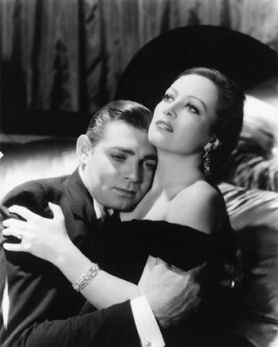
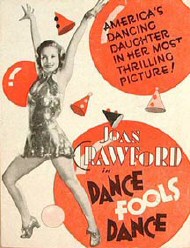

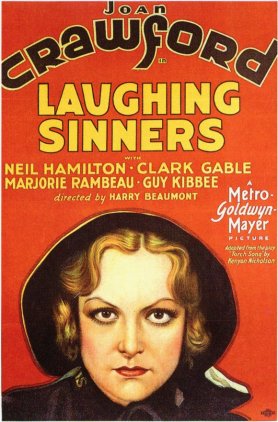


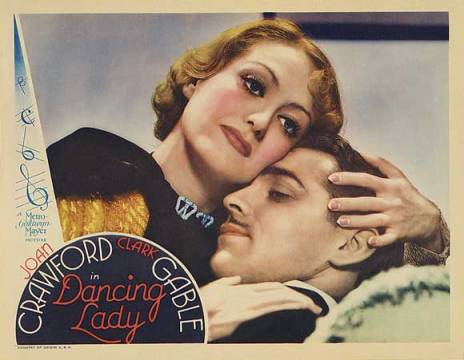
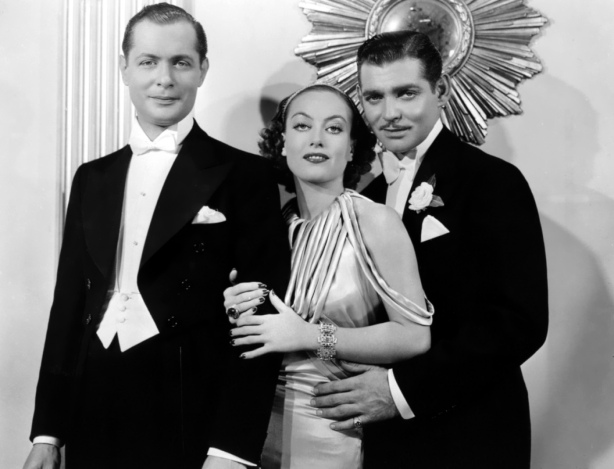
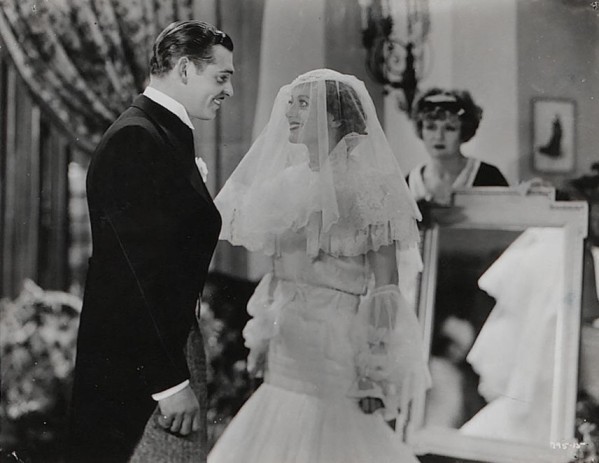
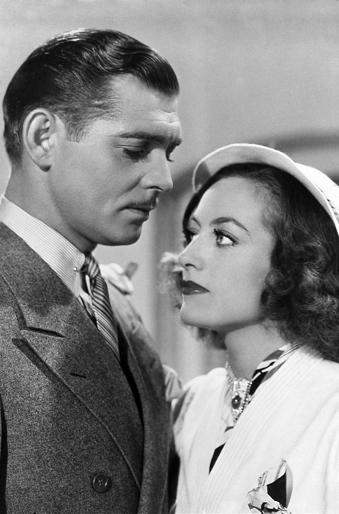
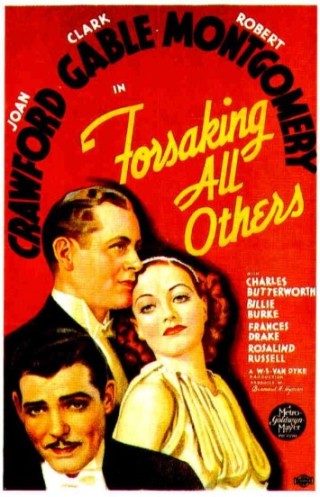
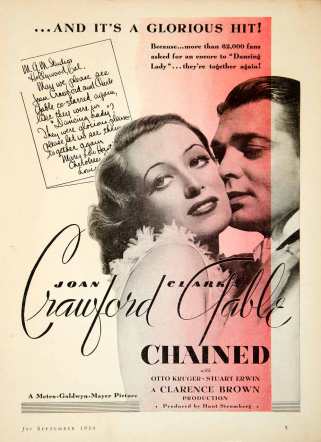
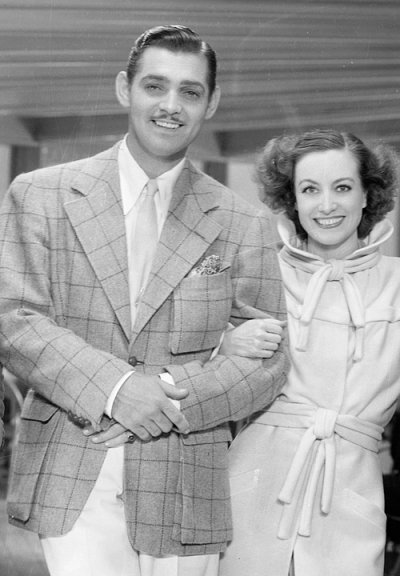
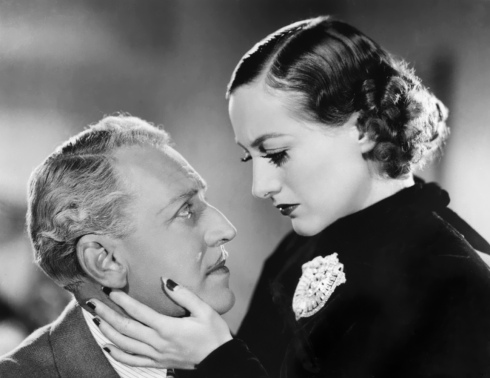
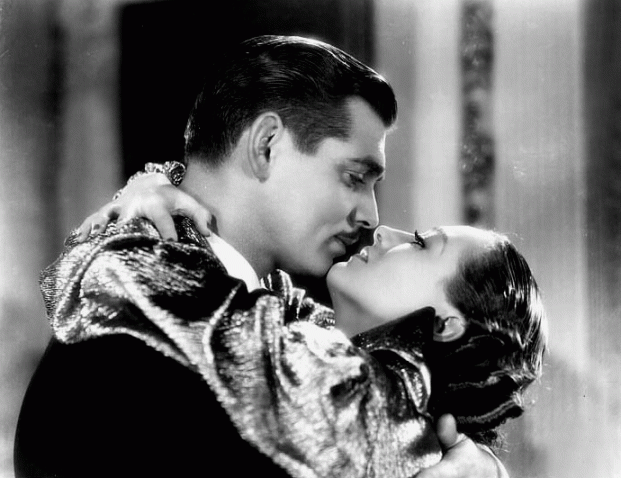
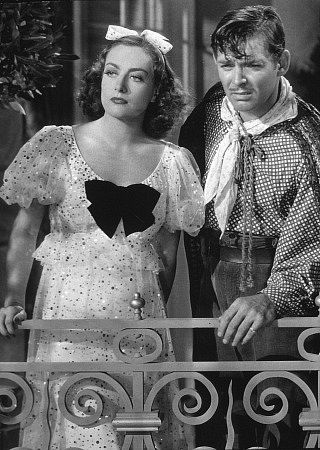
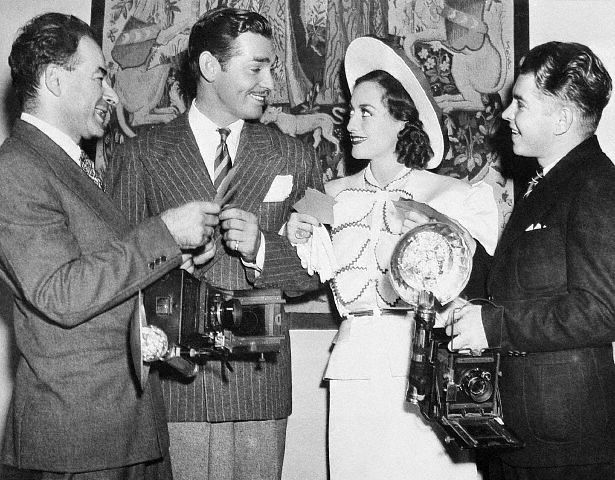
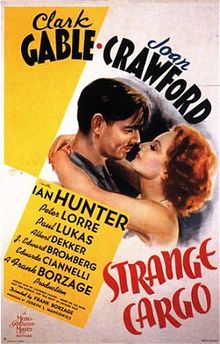
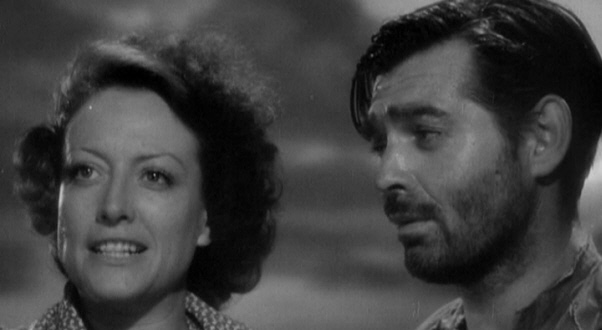
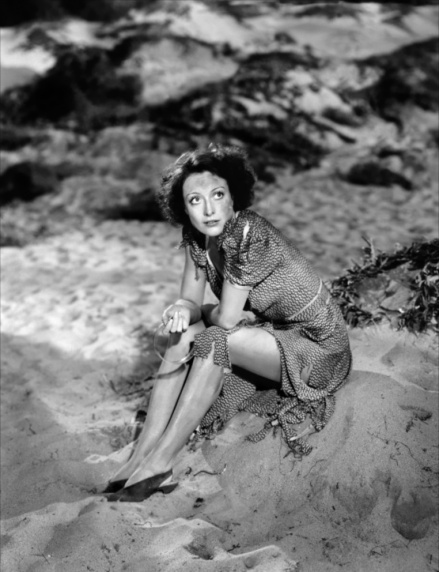
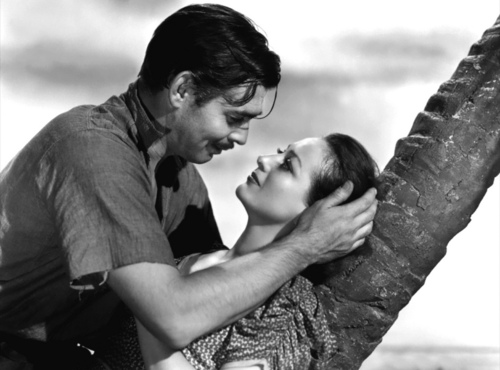
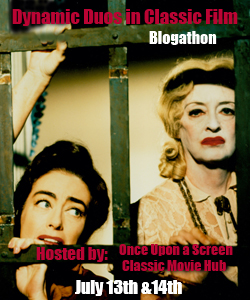
An excellent post! I have yet to watch one single film that they starred in together and I must admit this has very much wet my appetite! Looks like Strange Cargo will be our Saturday night flick next week. Also…kudos to you for having contacts at Warner Archive. Do you get to needle them and beg for favorite titles to be released? 😉
SO glad you like this because there was so much to say I was afraid it sounded choppy. In any case, both of these people are so compelling.
I liked some of these films more than others but there isn’t a loser in the bunch. If and when you watch Strange Cargo be sure to let me know what you think.
I met the Warner Archive guys at this year’s TCMFF and they’ve been incredibly generous to me. I don’t needle them at all, but I’m not reticent to give my recommendations if it comes to that. BUT, I would encourage anyone to do that.
Thanks much for stopping in and your comments! 😀
Aurora
I just realized, to my great shock, that I`ve not seen ANY of these movies!! *covers face in shame* However, this does mean I have lots of fab movie watching ahead of me.
This was a really interesting and well-researched post, Aurora.
Thanks, Ruth. This was another one of those cases where there’s so much interesting information I find it difficult to choose what to include and what not to include. In any case, just glad it made sense.
No need to feel bad – I just watched all of these for the first time for this post. SO glad I did and in order. As I mentioned, I loved watching the evolution of Gable and getting to see a different side of Crawford than I was used to. Process-wise, this may be the most enjoyable post I’ve done.
Aurora
Excellent post! I’ve always wanted to know more about the Gable-Crawford relationship and their films. Now, I do. Thanks!
Thanks, Maegan! I appreciate that. SOOO much to say about these two. Glad you liked this.
Aurora
Wow, I’d love to see these – I’ve just been reading a biography of Joan Crawford which wasn’t really all that good but made me want to see her early films, and these screen pairings with Gable sound great. None of them is available in the UK, except for ‘Dancing Lady’ – so I will start with that one, especially as it has the added bonus of being Fred Astaire’s first film, and hope to track some of the others down in future! Really enjoyed your posting, Aurora, and the photos are fantastic too – Gable and Crawford make a stunning couple. And thanks so much for organising the blogathon.
OH YOU MUST! Funny that the only one available in the UK is the one I’ve yet to see. And I can’t wait to as soon as I can get my hands on it! I don’t think you’ll be disappointed. Be sure to let me know if and when you can take a look at them. Thanks so much, Judy!
Aurora
FAN-tab-ulous post! I loved every word and photo. I am a Crawford fan, so I really ate this up. She and Gable complimented each other so beautifully. He really brought out the natural actress in Crawford. “Forsaking All Others” isn’t such a great film, but Joan does wear one of my favorite dresses in it and you included a photo of it! Thank you!
I really enjoyed ‘Forsaking All Others’ and think Joan looked freakin’ amazing in everything!
I’m thrilled you enjoyed this since you’re such a huge fan of hers. 😀 One of the things that resulted after my viewing all these films is a new appreciation for Crawford.
Thank so much for your comments!
Aurora
I gotta say the best scenes in “Love on the Run” are those with Donald Meek, but that’s just me. I think that is my least favourite of the Crawford-Gable pairings that I have seen, and you make me wish I had seen more, especially of those earlier films. “Dance, Fools Dance” has skipped my notice completely until now. I don’t believe I was aware or at least didn’t think much about the personal relationship of these two great stars. It certainly leads to an interesting angle at which to watch their work and you have done the job admirably.
You are so right about the scenes with Donald Meek and I didn’t even give him a mention. Love his caretaker and his watch dog!! “Love on the Run” was so scatterbrained I forgot about those moments.
Crawford / Gable pairing is certainly interesting. I enjoyed looking at it from the “steamy” point of view once I’d learned about their long “association.”
Thanks for stopping in. 🙂
Aurora
I had no idea those tow made so many pictures together. I might get myself drummed out of the classic movie club, but I don’t really like either of them, Joan even less than Gable. She’s so intense! But I do always like to hear stories of co-stars getting along well together.
Wow, what a super read! Thanks for posting this. I originally discovered “Strange Cargo” when I was plotting out my second “Garden of Allah” novel and scrambled to find it. You’re right! Tis indeed a strange movie! And an odd choice for Gable to agree to coming right off GWTW. As odd as it is, it’s worth tracking down just for the movie historical value and interest alone. Also, that quote of Joan’s — “I need sex for a clear complexion, but I’d rather do it for love.” — what a classic Crawford quote!
Hi Martin! Always nice to see you around here. I had a blast preparing this – so many juicy tidbits on- and off-screen with these two. I found nothing that stated that Gable did “Strange Cargo” only for Crawford but I get the feeling he did. There’s really no other reason for him to take on that role after GWTW but as a personal favor to her. Strange yes, but I still enjoyed them together. Just something there – it’s undeniable!
And, of course, I couldn’t NOT include that sex quote. She was something.
Aurora
I’d heard that Clark and Joan weren’t really getting on very well at that point so it never occurred to me that she might be the reason why he said yes to “Strange Cargo” but given their history, I can see why she may have been the reason why he said yes. Maybe he didn’t realize he’s didn’t like her quite so much until after production started! Still, you can’t fault Joan for giving less than 100% in that movie–she really gives it her all!
OH! She was definitely a trouper! I’d read that during one of the jungle scenes she noticed there a real snake and that she got quite close to it. So she stopped AFTER the scene and refused to shoot it a second time saying, “you bastards! that son of a bitch is real.”
Just gotta love her!
Wonderful post. “Dancing Lady” is a fun film in the mold of the Warner Bros. “Gold Digger” films. The chemistry between the two stars in this one is very palatable.
Glad you liked this, Stephen! I can’t tell you how badly I want to see that now that I’m bitten by the Gable/Crawford bug!
Woot – gettin’ hot in here. 🙂
Aurora
I always admire how thorough, well-researched and FUN your posts are and this one is no exception. Absolutely fabulous! And, on an unrelated side note, that wedding dress for Forsaking All Others is the craziest thing I have ever seen!
Thanks so much for being a wonderful co-hostess to this event!
Thanks so much! Glad you enjoyed this. HA! Yes, that wedding dress is outrageous!
Thank YOU for participating in the blogathon! It’s been an absolute crazy week for me so it’s taking me a bit to read all the posts, but can’t wait.
Aurora
What a complete, informative post! For sure Gable and Crawford had sparkles onscreen and off-screen.
A big thank you for co-nosting this blogathon! I’m loving the posts!
Kisses!
This post is pure pleasure for me. It’s a treasure Aurora!! I can barely bring myself to say that I haven’t seen even one of these. How does that happen when you love both actors? There is so much good information and good reviewing here that I’m just hooked. More than I was before. I’m still in shock I haven’t seen these, but sometimes I think I need to read a post like this before I do! I’m ready to go now…I hope I can find them all.
I hadn’t seen any of them before I decided to dedicate this post to this couple so we’re in the same boat. They’re great fun so I hope you get to watch them.
Aurora
As much as I agree with your headline, it is historically inaccurate, it was actually Joan’s friend Myrna Loy who was voted Queen. William Powell sent her a box of sour grapes, signed William the Fourth (his place in the poll).
I would never argue against Myrna being Queen of everything, but there was room for more than one. Joan was named “Queen of the Movies” by Life in 1937.
Myrna was also never “box-office poison,” which Joan was for quite some time.
It’s now Oct. 2021 and I can’t believe I’ve gone through life not knowing about the Crawford/Gable love affair until now. Tonight I saw Strange Cargo and noticed the great chemistry between them, then watched the special features and learned of their years long affair. Found your post and really enjoyed it. Thanks! I’ve recently (this past summer) begun studying noir and other films from Old Hollywood. I watched Possessed with Heflin last PM and am eager to see the version with Gable ASAP!
So glad you enjoyed this. It’s exciting to run into new discoveries. Let me know what you think of the POSSESSED with Gable.